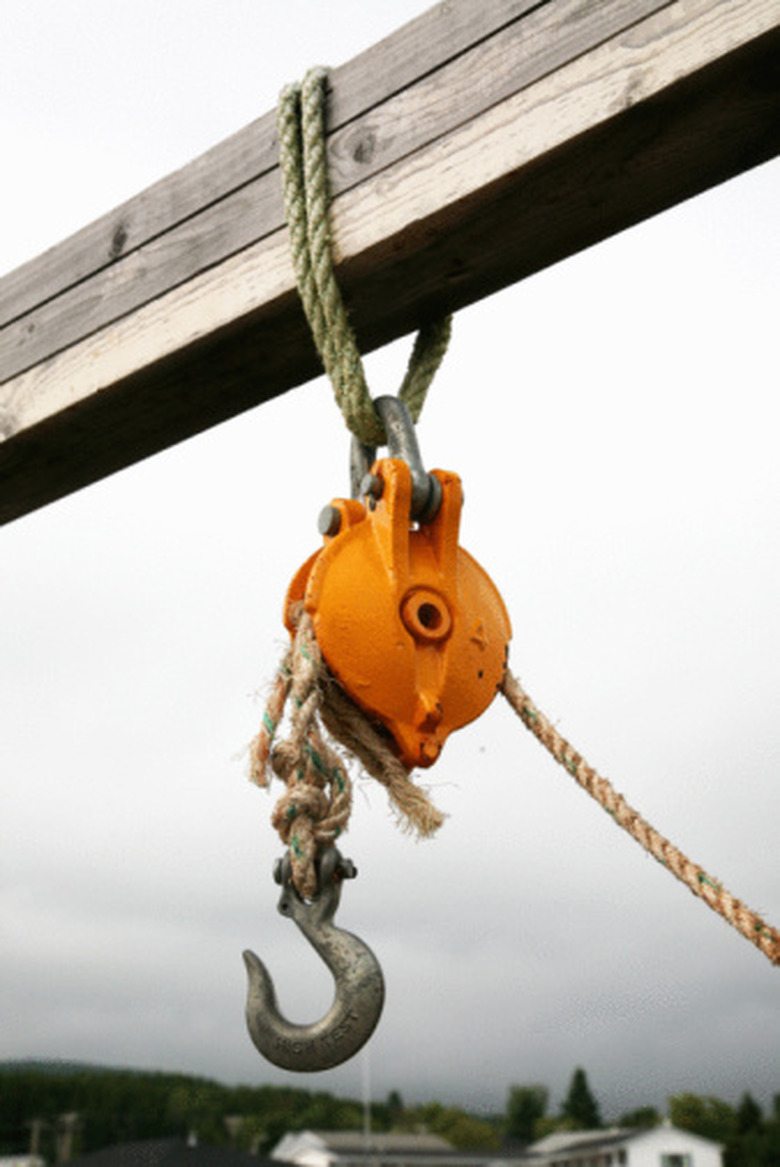A Lesson To Introduce Simple Machines
Six simple machines — levers, wheels and axles, inclined planes, wedges, pulleys and screws — have either one moving part, or none at all. Simple machines provide mechanical advantage, meaning they multiply the user's muscle power, making it easier to push or pull heavy objects, to lift them, or to shift the direction that the objects are moved.
Levers
Levers
Levers have two parts: a bar used for pushing and pulling force, and a fulcrum that works as a pivot point for the bar, and lessens the force that the bar needs to lift an object. There are three classes of levers. The first- class lever (a teeter-totter for example) has a fulcrum in the center. The wheelbarrow is an example of a second-class lever, which has its fulcrum at the far end of the bar. Third-class levers (i.e. forearms, fishing poles) have a fulcrum at the near end of the bar, closest to the person using the lever.
Wheels and Axles
Wheels and Axles
The wheel and axle makes it easier to move objects or loads along the ground without having to drag them. One type of wheel and axle transports the object in the same direction as the wheels are moving, like roller skates or wheel chairs, for instance. The other type of wheel and axle (i.e. doorknob) is stationary and works more like a lever.
Inclined Planes
Inclined Planes
Inclined planes are straight, slanted surfaces, with one end higher than the other. Examples include ramps, driveways and staircases. They make work easier because it takes less effort to move a load up the ramp. The trade-off is that the load has to be moved a greater distance to get it to the next level.
Wedges
Wedges
V-shaped wedges look similar to inclined planes but work differently. The wedge can work in one of three ways. For example, shovels work by lifting heavy objects, an axe pries two parts of a log apart, and a doorstop prevents a door from moving.
Pulleys
Pulleys
A pulley consists of a rope, belt or chain fitted into the groove in a wheel. It works by decreasing the amount of effort needed or the direction of force required to lift an object. A single, fixed pulley — like a flagpole — switches the direction of force needed to lift that flag. A multiple pulley decreases the necessary effort by distributing the effort over two, three, or four attached pulleys. The trade-off: increasing the number of pulleys means increasing the distance that the rope, chain or belt needs to travel, thus requiring it to be longer.
Screws
Screws
Screws are inclined planes that spiral around a center column. Screws and light bulbs both require that a pushing, twisting force be applied to one end. This fastens a screws into wood, or a light bulb in a socket. A screw with wider threads (spiraling ramps) requires more force to turn them. Tighter threads need less force applied, but require a lot more turning.
Cite This Article
MLA
Whetzel, Joan. "A Lesson To Introduce Simple Machines" sciencing.com, https://www.sciencing.com/lesson-introduce-simple-machines-8078032/. 24 April 2017.
APA
Whetzel, Joan. (2017, April 24). A Lesson To Introduce Simple Machines. sciencing.com. Retrieved from https://www.sciencing.com/lesson-introduce-simple-machines-8078032/
Chicago
Whetzel, Joan. A Lesson To Introduce Simple Machines last modified March 24, 2022. https://www.sciencing.com/lesson-introduce-simple-machines-8078032/
